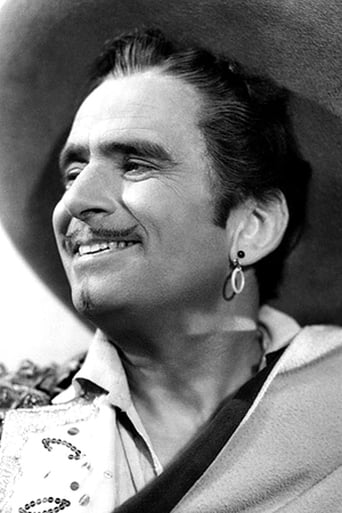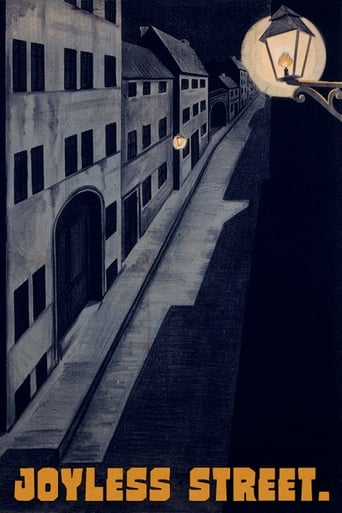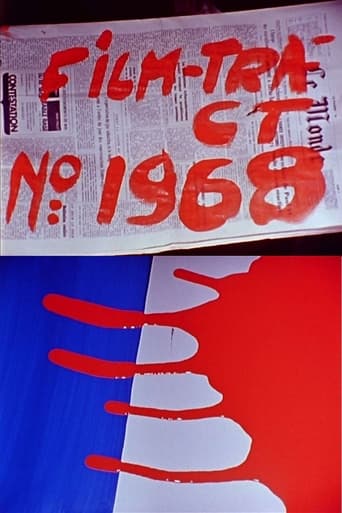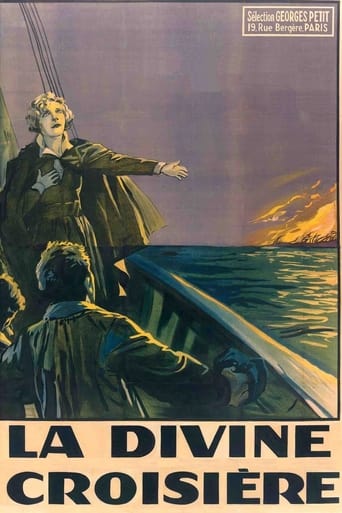
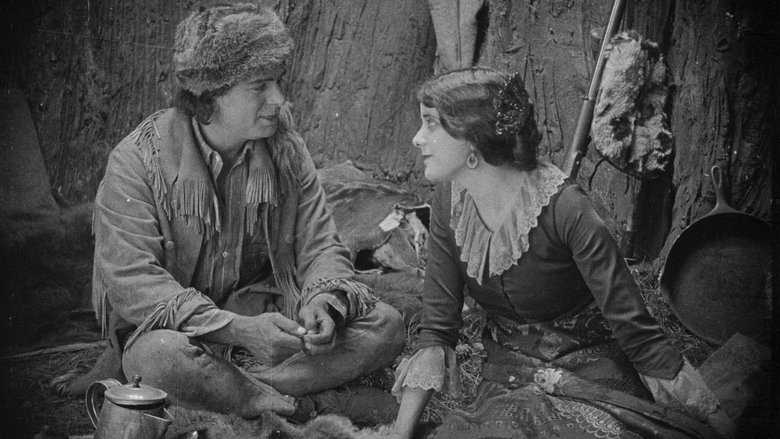
The Half-Breed (1916)
In an attempt to brand himself as a serious actor, the smiling swashbuckler Douglas Fairbanks starred in THE HALF-BREED (1916), a Western melodrama written by Anita Loos and directed with flair by Allan Dwan. Fairbanks stars as Lo Dorman, who has been ostracized from society because of this mixed ethnicity - his Native American mother was abandoned by his white father. When Lo catches the eye of the rich white debutante Nellie (Jewel Carmen), he becomes a target for the racist Sheriff Dunn (Sam De Grasse), who wants to break them up and take Nelli for his own. This love triangle becomes a quadrangle with the arrival of Teresa (Alma Rubens), who is on the run from the law. Through fire and fury Lo must decide who and what he truly loves.
Watch Trailer
Cast
Similar titles

Reviews
Surprisingly incoherent and boring
Powerful
Good , But It Is Overrated By Some
It's not great by any means, but it's a pretty good movie that didn't leave me filled with regret for investing time in it.
While Douglas Fairbanks is famous for his fantasy and adventure films (such as THE THIEF OF BAGDAD, ROBIN HOOD and THE MARK OF ZORRO), he also made a variety of other films...including some westerns early in his film career. TCM showed two of them tonight, THE GOOD BAD MAN and THE HALF-BREED. Both are about equally enjoyable, though THE HALF- BREED is exciting to watch because of its location filming in Boulder Creek (near San Jose) and Calaveras County (near Yosemite). Seeing all these giant redwoods is reason enough to see the movie!When the film begins, a native woman has a baby and has been dumped by the father of the child. She is friendless and neither the whites nor Indians want anything to do with her. She then gives her baby to a nice old naturalist living in the woods then she kills herself! So the child is raised away from civilization by the old man. When the old guy dies, the now grown Sleeping Water (Fairbanks) travels to the nearby town and learns that pretty much most of the white folks he meets are Indian-hating scum. He decides to leave and return to the woods and is soon joined by Teresa, a woman who has stabbed two perverts who couldn't keep their hands off her. Additionally, Nellie from town inexplicably has fallen for Sleeping Water...as has Teresa. What's next? See the film.While this is not a great film, it does do a nice job of humanizing the main character and the plot all centers on how trashy the 'civilized' white folks could be. In many ways, this is like a great silent western, THE SQUAW MAN...which is a must-see. As for THE HALF-BREED, it's very good for when it was made and ages reasonably well. Sadly, the film was restored by piecing together many different prints and some of them are pretty shabby condition- wise.
"The Half-Breed" certainly is one of Douglas Fairbanks' most unusual and daring films. After having made so many hugely successful comedies and achieved the status of a superstar, he felt it was time for him to 'touch' on a subject still VERY controversial back in 1916: the fate of the Native Americans, who, while in the movie they were called 'children of nature', to the white Americans they were still 'children of a lesser God' - they didn't even possess civil rights yet at that time! And Doug not only had the courage to play a 'half-breed' (the mother of our hero here, called Lo Dorman - but in the 'old' restored version Dave Carson for some unknown reason, we'll come to that later on - was an Indian woman), but also to depict in ALL its cruelty the wrongs that were being done to the Indians by the 'white man', and even a romance of the 'half-breed' with a white woman! It was Doug's first drama - and a most provocative one...Unfortunately, it was a box office failure ('conservative' critics had seen to that, warning the audience about the 'immoral' content of the movie...); and unfortunately, after it had been considered lost for decades, the first thing that turned up in the 1980s was only a remnant of the original version, which confuses the viewer completely with its incoherency, and makes us believe that Lo's romance with Nellie (who now was called 'Peggy') would be the happy ending - which it wasn't...The original version had a running time of almost two hours, while the 'restored' version is only a rump of about 50 minutes - leaving out completely the MOST controversial part of Lo's competition with Sheriff Dunn (played by Sam De Grasse, the 'eternal baddie' in almost all of Doug's silent movies) for the favor of Nellie - who, on her part, surely WASN'T the demure, shy girl of pre-WWI USA, but one of the first 'man-eaters', years before the flappers and vamps made their appearance... And the MOST ironical thing of it all is - that Sheriff Dunn is actually Lo's father; and since he's obviously not only jealous, but also ashamed of his 'half-breed' son, he does everything to discredit him among the townsfolk! (And Doug's famous bathing scene almost in the nude - which director Allan Dwan had inserted especially for Doug's then wife Beth, who didn't want her husband to play a 'dirty, filthy character' - is also missing; much to the chagrin of today's female audience, of course...) But FORTUNATELY, in 2013, ANOTHER surviving copy of almost the complete movie was found, which makes us realize the TRUE plot - and the ending, in which, of course, Doug DOESN'T get Nellie (Peggy), but the Mexican dance hall girl Teresa (called 'Dolores' in the restored version); not because he would have been afraid of actually showing an interracial romance come true, but simply because amorous Nellie wasn't his type: he wanted a REAL, loving woman by his side! Anyway, no matter whether you'll only be able to watch the 'rump' version or the REAL restored one - this movie is a GREAT and VERY courageous drama about the 'children of nature', who are being destroyed by the 'white man', his 'civilization' and his 'firewater', and a deeply moving contemplation about the vanishing of the wilderness and the dubious 'triumph' of civilization.
But now, because of much labor and love by Robert Byrne and his team including the Cinémathèque française, the Library Of Congress and Lobster Films, it is nearly complete. I just saw it this past Saturday, 11/2/2013 at the Packard Campus theater in Culpeper, VA. In what might have been an early movie first, the lead character is sympathetically shown despite having native blood. Living as an outcast, young Lo Dorman (Fairbanks) is welcomed back into society by pretty preacher's daughter Nellie (flirty Jewel Carmen), who cares not a whit about his mixed parentage. SPOILER ALERT: But Dorman's presence in town proves uncomfortable for Sheriff Dunne (Sam DeGrasse) -- who, unbeknownst to anyone himself, is Lo's father. The sheriff does his worst to discredit Lo in the eyes of the townsfolk. Our hero joins with another "outcast," dance-hall girl Teresa (Alma Rubens). Now with the merged sources from three prints (and months of labor reassembling each shot, scene) it has a beginning, middle and end. In an interview with Kevin Brownlow, director Allan Dwan revealed that The Half-Breed almost didn't get made, thanks to the interference of Fairbank's then wife, who didn't want her husband to appear as an "unwashed" half-breed. To circumvent this, Dwan inserted a scene showing a nearly nude Fairbanks taking a "bath" in a river, then thoroughly scrubbing himself and his clothes with sand. "He was a washed Indian, not a dirty Indian," Dwan explained. "I only put the scene in to satisfy Mrs. Fairbanks."
This wonderful early silent by pioneering director Allan Dwan shows him in full mastery of film style -- excellent use of landscape, of close-ups, of action montage. The performances are all good, especially Alma Reubens as the woman who loves Fairbanks but thinks she'll never get him. A very fine script by Anita Loos. Well worth seeing -- and now you can because the film has been restored.
